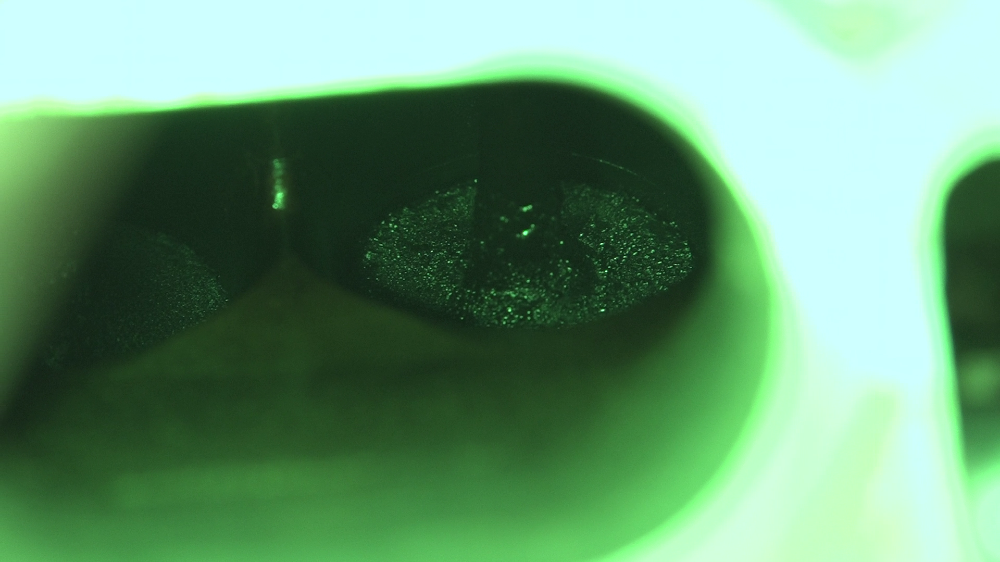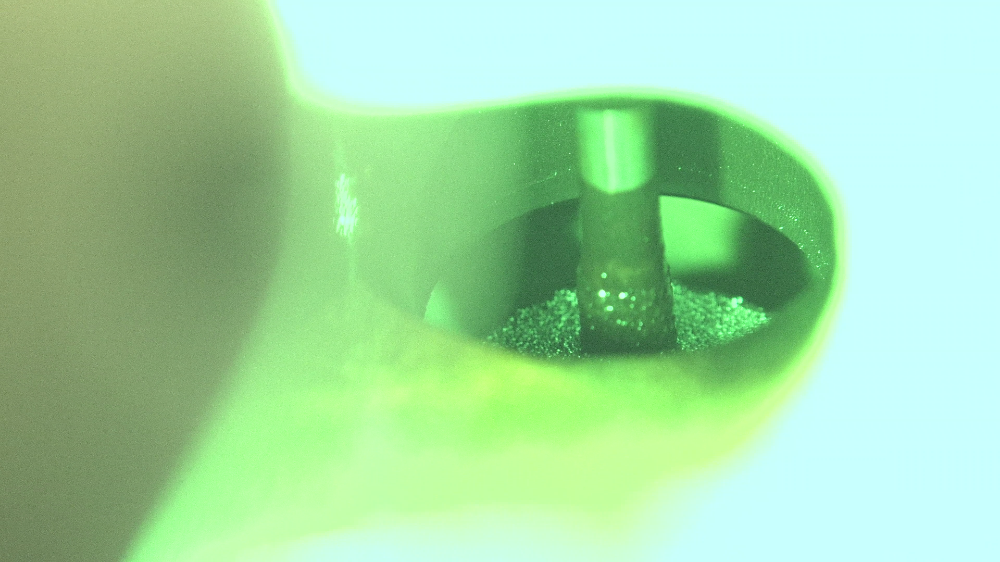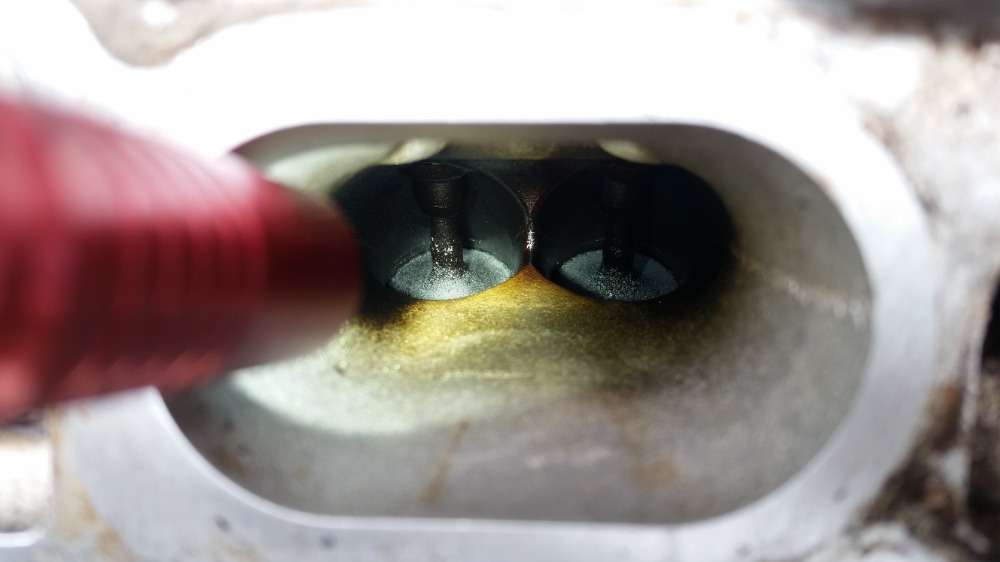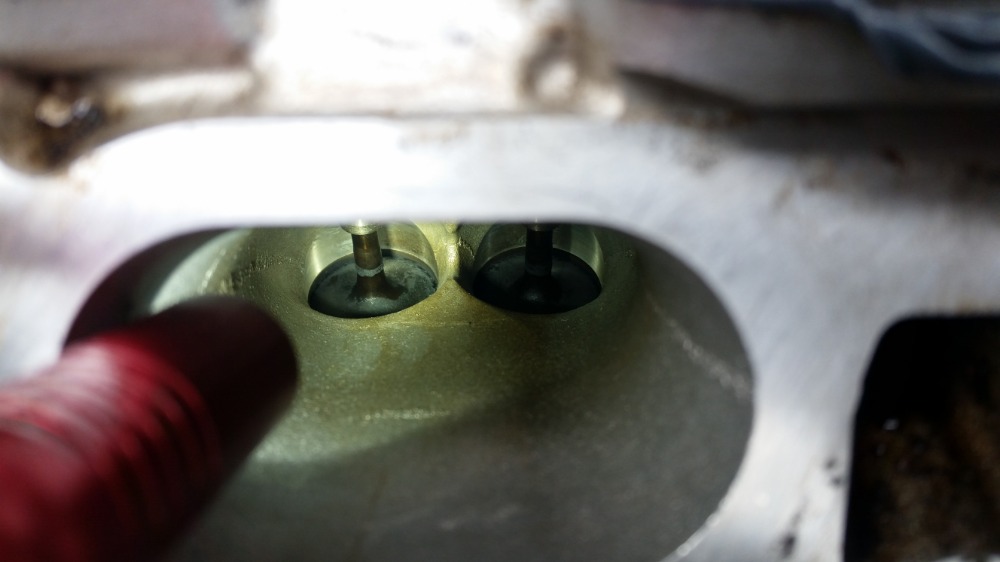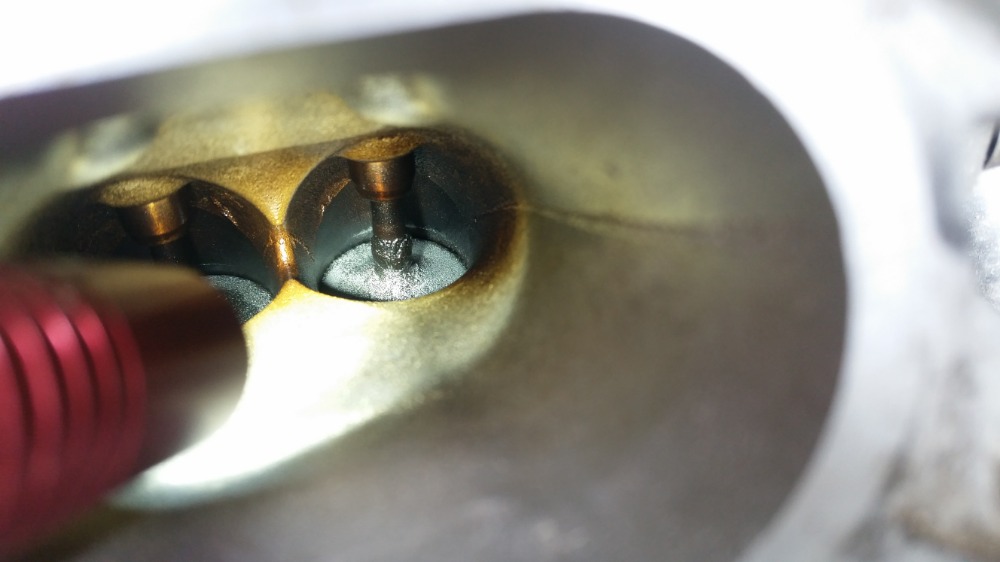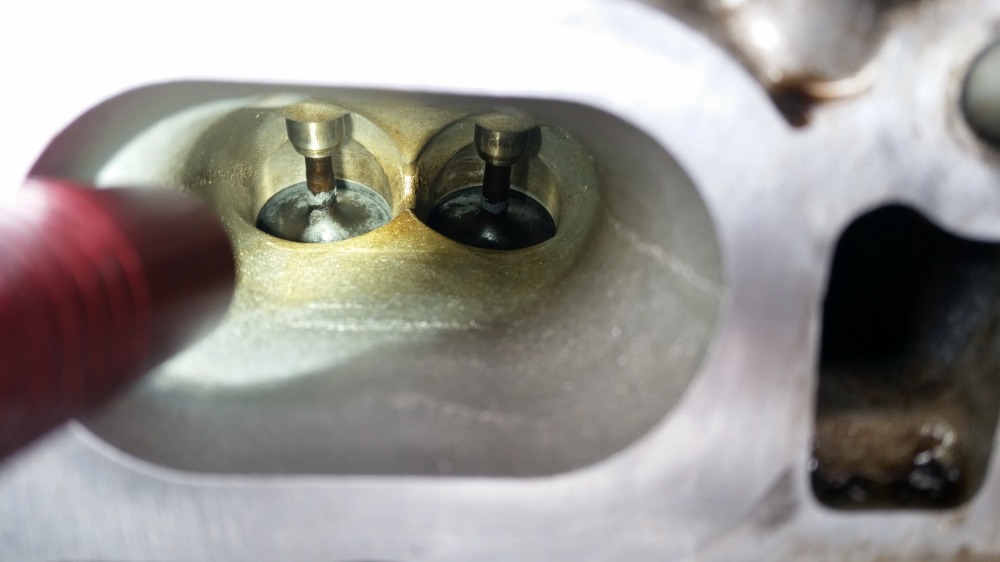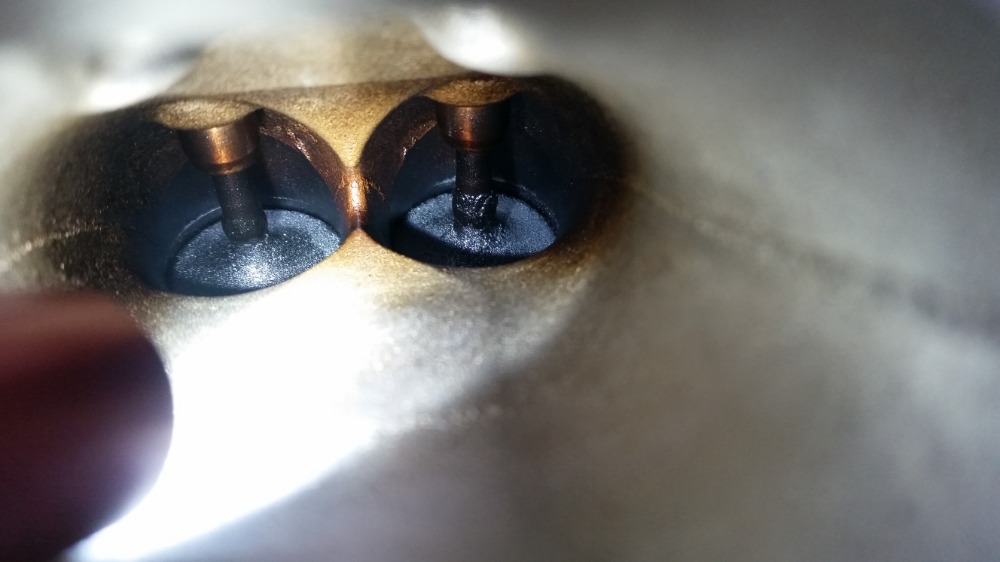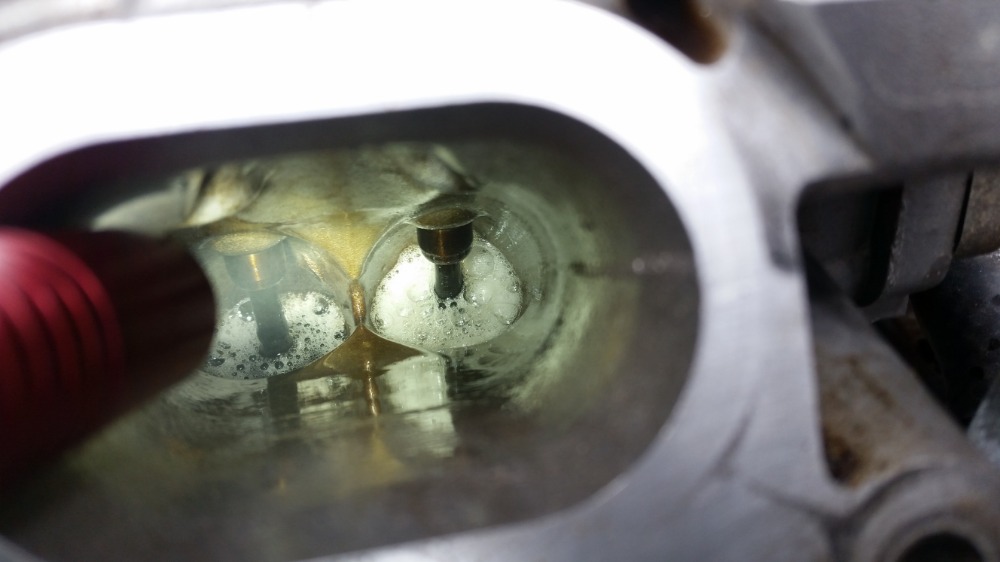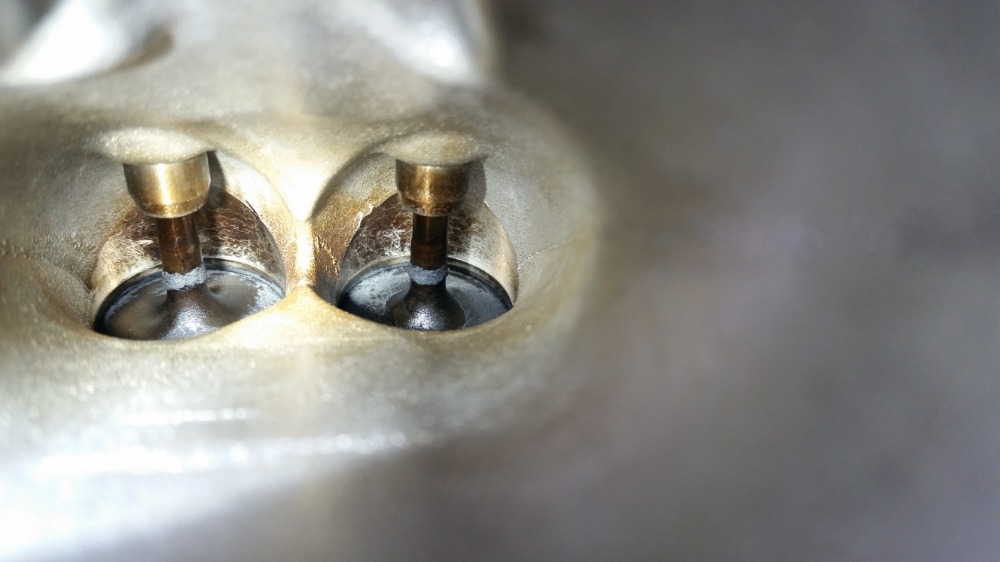CRC GDI Valve Cleaner Trial - Before and After (Never Again)
- graywave
-
 Topic Author
Topic Author
- Offline
- Elite Member
-

- Adv. Diagnostics New Hampshire
- Posts: 302
- Thank you received: 80
So I decided to remove my intake, get video of the valves condition before the treatment, then remove the intake again and see the valves after the treatment. Well this stuff did more harm then good. Yes a "tiny" bit was cleaned off but they are still gummed up. The biggest problem with this method is the design of the intake manifold. Since my 4cyl 2.0 engine's intake drops low before the air moves back up and into the engine head, a lot of that cleaner pools in the intake regardless how slow you go or how long you wait between sprays. Once you hit the throttle to drive off, it sucks a bunch of that crap up and starts pinging away and smokes like hell. Sounds like the engines is tearing its self apart.
I tried to be as cautious as I could with this crap. They say to empty the whole can in one treatment. I did it in two treatments with a long drive in between with light throttle to get the pooled fluid to evaporate and get consumed little by little. Still had a good amount get consumed at once, once in awhile. I only sprayed the can for about 3-4 seconds at a shot the first treatment, and only about 1/2 - 1 second the second treatment, both times about 30-60 seconds in between sprays.
My thoughts.....I will NEVER use this stuff in that fashion ever again! It MIGHT be ok with 6-8 cylinder engines that don't have a valley in the intake manifold where the stuff can pool up. It also leaves an oily residue behind which I had to clean out of the throttle body I just cleaned. How I would use it, is by spraying the valves and pooling it up in the intake runner, scrubbing the valves with a wire brush on a drill and then sucking out all the fluid and rinse them down with some carb clean or with the same cleaner.
Also within 31K miles, my throttle body had a real nice carbon lip on the bore. I was very surprised as to how bad it was. After I cleaned the throttle body and gave the engine hell with the spray can I reset all the adaptive values.
So it didn't clean the valves and I will be doing it how I was planning on originally next time I get time. I have video and pictures I need to put together with before and after shots so be patient, I'll get them together.
I"ll be back with updates
Confirm what it's not, and fix what it is!
Please Log in or Create an account to join the conversation.
- Tyler
-

- Offline
- Moderator
-

- Full time HACK since 2012
- Posts: 6064
- Thank you received: 1531
The biggest problem with this method is the design of the intake manifold. Since my 4cyl 2.0 engine's intake drops low before the air moves back up and into the engine head, a lot of that cleaner pools in the intake regardless how slow you go or how long you wait between sprays. Once you hit the throttle to drive off, it sucks a bunch of that crap up and starts pinging away and smokes like hell. Sounds like the engines is tearing its self apart.
Well done being careful on that one. :ohmy: I had an ACDelco class where GDI carbon cleaning came up. Apparently, dealers have had issues with techs hydrolocking engines after a cleaning service. They dump the cleaner in at flat rate speed, hit the throttle on a test drive, and oops!
Please Log in or Create an account to join the conversation.
- graywave
-
 Topic Author
Topic Author
- Offline
- Elite Member
-

- Adv. Diagnostics New Hampshire
- Posts: 302
- Thank you received: 80
Pictures are green cause I had to use night vision to see them.
Here is one of Cyl 1 valves before. I have all the others still in video just needing to find time. All other valves look the same though.
Here is one of Cyl 1 valves After. Same one. little hard to see since its open this time. I"ll get the other pics.
Confirm what it's not, and fix what it is!
Please Log in or Create an account to join the conversation.
- Dylan
-

- Offline
- Moderator
-

- Belgium, Europe
- Posts: 1461
- Thank you received: 327
We had a car in the shop a few weeks ago. Same problem. Gummed up valves. So I took the intake off and called this guy I know for some walnut blasting. Forgot to take pictures but I was pretty pleased with the result.
Please Log in or Create an account to join the conversation.
- graywave
-
 Topic Author
Topic Author
- Offline
- Elite Member
-

- Adv. Diagnostics New Hampshire
- Posts: 302
- Thank you received: 80
Confirm what it's not, and fix what it is!
Please Log in or Create an account to join the conversation.
- Tyler
-

- Offline
- Moderator
-

- Full time HACK since 2012
- Posts: 6064
- Thank you received: 1531
When I got my first car, I used to think I was cool for smoking my neighbors out by running a can of Seafoam though my brake booster hose. Now I know better. :blush:
Please Log in or Create an account to join the conversation.
- Andy.MacFadyen
-

- Offline
- Moderator
-

- Posts: 3353
- Thank you received: 1037
However it reminds me of a friend back in the 1970s he had a Sunbram Imp a nice little car with very neat all aloy engine but very prone to head gasket failure. Of course the head gasket blew and he replaced it not realising the head had also cracked. For months afterwards he had to remove the pressure cap everytime he parked and take spark plug out to expell the water before he could start the engine.
" We're trying to plug a hole in the universe, what are you doing ?. "
(Walter Bishop Fringe TV show)
Please Log in or Create an account to join the conversation.
- graywave
-
 Topic Author
Topic Author
- Offline
- Elite Member
-

- Adv. Diagnostics New Hampshire
- Posts: 302
- Thank you received: 80
I'm very satisfied with the results. Wish I could have got it all but it took about 4 hours to get them this clean using nylon brushes.
Confirm what it's not, and fix what it is!
Please Log in or Create an account to join the conversation.
- Noah
-

- Offline
- Moderator
-

- Give code definitions with numbers!
- Posts: 4959
- Thank you received: 1111
"Ground cannot be checked with a 10mm socket"
Please Log in or Create an account to join the conversation.
- Tyler
-

- Offline
- Moderator
-

- Full time HACK since 2012
- Posts: 6064
- Thank you received: 1531
Please Log in or Create an account to join the conversation.
- graywave
-
 Topic Author
Topic Author
- Offline
- Elite Member
-

- Adv. Diagnostics New Hampshire
- Posts: 302
- Thank you received: 80
Confirm what it's not, and fix what it is!
Please Log in or Create an account to join the conversation.
- graywave
-
 Topic Author
Topic Author
- Offline
- Elite Member
-

- Adv. Diagnostics New Hampshire
- Posts: 302
- Thank you received: 80
Confirm what it's not, and fix what it is!
Please Log in or Create an account to join the conversation.
- PTCB
-
- Offline
- New Member
-

- Posts: 1
- Thank you received: 0
Tyler wrote:
The biggest problem with this method is the design of the intake manifold. Since my 4cyl 2.0 engine's intake drops low before the air moves back up and into the engine head, a lot of that cleaner pools in the intake regardless how slow you go or how long you wait between sprays. Once you hit the throttle to drive off, it sucks a bunch of that crap up and starts pinging away and smokes like hell. Sounds like the engines is tearing its self apart.
Well done being careful on that one. :ohmy: I had an ACDelco class where GDI carbon cleaning came up. Apparently, dealers have had issues with techs hydrolocking engines after a cleaning service. They dump the cleaner in at flat rate speed, hit the throttle on a test drive, and oops!
Sorry for digging this up, but I had the same thing. Learned it the hard way too. I have the current Mazda CX-5 with the SkyActiv-G, which has the same similar design of the intake manifold. I have done two treatments of this product on my Toyota Caldina 2003 with no issues in the past as it has a different manifold design. Thus, no pooling of the cleaner.
I made a grave mistake of flooring it after I had waited for an hour. It was accelarating fine until it hit the point, where there was enough suction to suck in all those cleaner in the manifold. Then, the engine knocked a couple of time while blowing a huge cloud of smoke. So, I took my foot off the gas and let it cruise before giving it a light gas. It was fine for the rest of the drive. But for a while, it would ping/knock if it exceeded a certain RPM until all the cleaner was gone.
The aftermath, I reckon the acceleration has decreased although further testing is needed to confirm this. The engine is definitely louder than before, but seems to run smooth while idling and driving. What sort of damages has been done to the engine? What would be the next step to take? Thanks in advance. Cheers.
Please Log in or Create an account to join the conversation.
- Andy.MacFadyen
-

- Offline
- Moderator
-

- Posts: 3353
- Thank you received: 1037
I am wondering about how much effect introducing steam from wall paper or kitchen steam cleaner into a running engine would have.
" We're trying to plug a hole in the universe, what are you doing ?. "
(Walter Bishop Fringe TV show)
Please Log in or Create an account to join the conversation.
- Tyler
-

- Offline
- Moderator
-

- Full time HACK since 2012
- Posts: 6064
- Thank you received: 1531
PTCB wrote: The aftermath, I reckon the acceleration has decreased although further testing is needed to confirm this. The engine is definitely louder than before, but seems to run smooth while idling and driving. What sort of damages has been done to the engine? What would be the next step to take? Thanks in advance. Cheers.
Any trouble codes afterwards? I'm sure some got set during the treatment, but in the days since?
If it seems to run smoothly without misfiring at idle and under load, then I'd suspect that you probably didn't damage anything in the engine. The best confirmation of this would be compression and leak down testing on all cylinders.
No offense meant here, but are you sure the engine is louder and low on power? Because it's very easy to become hyper sensitive about such things after a service or repair goes wrong. Especially when you know expensive damage is possible.
Please Log in or Create an account to join the conversation.
- Noah
-

- Offline
- Moderator
-

- Give code definitions with numbers!
- Posts: 4959
- Thank you received: 1111
Andy.MacFadyen wrote: On large marine 2 stroke diesels part of the morning watch juniors job was to spray water directly into the turbo for a few minutes.
I am wondering about how much effect introducing steam from wall paper or kitchen steam cleaner into a running engine would have.
I have also wondered if the induction of water steam would be a viable solution on a modern engine
"Ground cannot be checked with a 10mm socket"
Please Log in or Create an account to join the conversation.
- Tutti57
-

- Offline
- Platinum Member
-

- Posts: 1096
- Thank you received: 253
Please Log in or Create an account to join the conversation.
- Andy.MacFadyen
-

- Offline
- Moderator
-

- Posts: 3353
- Thank you received: 1037
tinleytech.co.uk/shop/valve-savers-and-f...-valve-saver-kit-e2/
" We're trying to plug a hole in the universe, what are you doing ?. "
(Walter Bishop Fringe TV show)
Please Log in or Create an account to join the conversation.
- Andy.MacFadyen
-

- Offline
- Moderator
-

- Posts: 3353
- Thank you received: 1037
Only test vehicle to hand was a turbo diesel I tried using a steam wall paper steamer to introduce steam to the inlet downstream of the MAF and Turbo at the EGR this was followed by trying water spry combined the steam spray resulting copious water vapour exiting at tail pipe. When the vehicle was road tested with accelerator pedal to the floor under full turbo boost a considerable ammout of "something" could be seen coming from the exhaust.
This treatment didn't have much effect on baked on carbon at the EGR but removed some and most of any oil residue, interestingly the next day after any condensation on concrete where the car had been sitting had dried a considerable area around where the exhaust tail pipe had been was stained with a dark grey deposit.
How effective this treatment was on cleaning the inlet is in doubt but I am sure there was some cleaning effect on the combustion chamber, exhaust side of the turbo and the catalyst.
" We're trying to plug a hole in the universe, what are you doing ?. "
(Walter Bishop Fringe TV show)
Please Log in or Create an account to join the conversation.
- Dtech494
-
- Offline
- Junior Member
-

- Posts: 35
- Thank you received: 9
I had attended Automekanica a couple of years back and as per the seminar,
the host claimed that adding water can ruins the O2 sensors.
The biggest problem with GDI cleaning is that the carbon once built up
becomes too hard to dissolve.
The problem is if those chunks of carbon break off that they glaze or foul the catalytic converter. The host claimed that after studies nothing seems to work effectively but someone was working on a three stage chemical process that involved cold and hot fluids being injected.
I have not invested in any new cleaning equipment and have only done a handful
of intake spray type cleaning attempts on vehicles that develop idle issues.
I do offer it as a preventative measure only.
Customers don't like when you do not offer any positive assurances from the cleaning process so they either then don't do it likely go to a shop that offers
false promises.
It kind of leads me to needing to re examine some sort of chemicals or process that does work. I had believed that CRC would work provided the build up is not too severe and the cleaning is done frequently enough.
I also had my own experience on my own vehicle with it puddling in the lower intake and pinging on the highway . i was afraid it would bend a connecting
rod from hydraulic lockup. Not that I would be able to tell because
these vehicles have bottom end engine failures anyway LOL.
All joking aside I don't think I harmed it but will look to spray in the pcv
system or a stick a tube in a vacuum hose that does not go into the lower intake.
It is important though that it keeps atomizing and not puddling.
That is a tip that I got from a Peer who used to be my local BG rep.
Now in the current situation I might have some time on my hands to
re examine the process and chemicals.
I hope other members post if they find something that works well.
I tend to believe the best solution is removing the intake.
Please Log in or Create an account to join the conversation.


